Global Molecular Epidemiology of Cryptococcus neoformans and Cryptococcus gattii: An Atlas of the Molecular Types
- PMID: 24278784
- PMCID: PMC3820360
- DOI: 10.1155/2013/675213
Global Molecular Epidemiology of Cryptococcus neoformans and Cryptococcus gattii: An Atlas of the Molecular Types
Abstract
Cryptococcosis is a fungal disease affecting more than one million people per year worldwide. The main etiological agents of cryptococcosis are the two sibling species Cryptococcus neoformans and Cryptococcus gattii that present numerous differences in geographical distribution, ecological niches, epidemiology, pathobiology, clinical presentation and molecular characters. Genotyping of the two Cryptococcus species at subspecies level supplies relevant information to understand how this fungus has spread worldwide, the nature of its population structure, and how it evolved to be a deadly pathogen. At present, nine major molecular types have been recognized: VNI, VNII, VNB, VNIII, and VNIV among C. neoformans isolates, and VGI, VGII, VGIII, and VGIV among C. gattii isolates. In this paper all the information available in the literature concerning the isolation of the two Cryptococcus species has been collected and analyzed on the basis of their geographical origin, source of isolation, level of identification, species, and molecular type. A detailed analysis of the geographical distribution of the major molecular types in each continent has been described and represented on thematic maps. This study represents a useful tool to start new epidemiological surveys on the basis of the present knowledge.
Figures

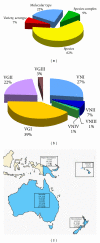

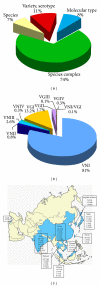
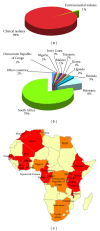


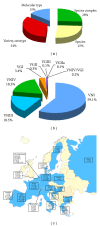
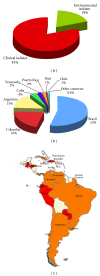

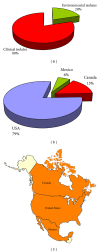
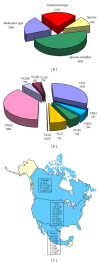
References
-
- Del Valle L, Piña-Oviedo S. HIV disorders of the brain; pathology and pathogenesis. Frontiers in Bioscience. 2006;11(1):718–732. - PubMed
-
- Abadi J, Nachman S, Kressel AB, Pirofski LA. Cryptococcosis in children with AIDS. Clinical Infectious Diseases. 1999;28(2):309–313. - PubMed
-
- Mamidi A, DeSimone JA, Pomerantz RJ. Central nervous system infections in individuals with HIV-1 infection. Journal of NeuroVirology. 2002;8(3):158–167. - PubMed
-
- Wright D, Schneider A, Berger JR. Central nervous system opportunistic infections. Neuroimaging Clinics of North America. 1997;7(3):513–525. - PubMed
-
- Korfel A, Menssen HD, Schwartz S, Thiel E. Cryptococcosis in Hodgkin’s disease: description of two cases and review of the literature. Annals of Hematology. 1998;76(6):283–286. - PubMed
Publication types
LinkOut - more resources
Full Text Sources
Other Literature Sources

